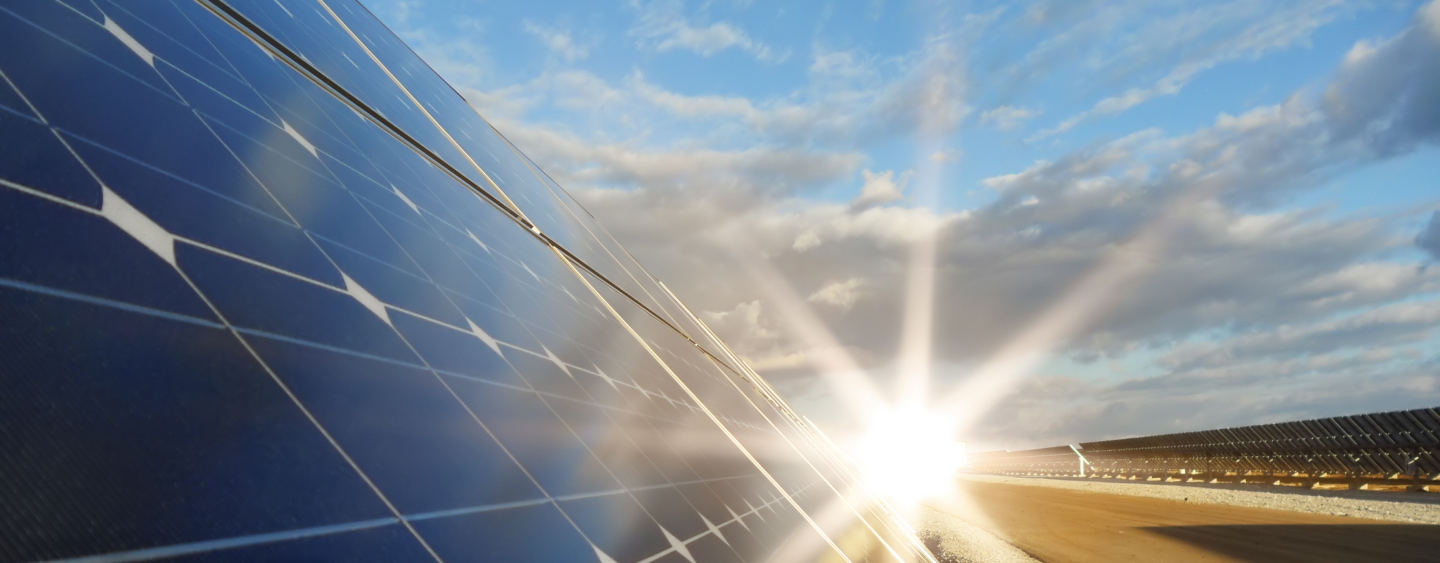Half a dozen solar power stations in Thailand are generating enough energy to replace 25 milion liters of imported fuel, reduce carbon emissions by 55,000 tons, and deliver 75MW of electricity, thanks to the Thai sunshine, and Hitachi Energy's MicroSCADA Pro.
Hitachi Energy has been active in Thailand for more than a century. As the country has turned more towards renewable energy we’ve been there to help. MicroSCADA Pro is already being used in several Thai solar projects, and around the world, and that field experience is invaluable in understanding the challenges unique to managing a substation drawing its power from the sun.
Project
The Solarco Project, a joint venture between Yanhee Solar Power and Thailand’s first independent power producer, the Electricity Generating Public Company Limited (EGCO), includes five sites in Nakhon Pathom, and one in Suphan Buri province. All sites are blessed with an estimated 4.9 kWh of sunshine per square meter, waiting to be gathered. Polycrystalline panels are used for all the sites in the Solarco Project, as they offer the highest power-to-cost ratio, and once the power has been collected it is delivered into the Provincial Electricity Authority grid locally, over 115kV lines.
Including buffer zones, and required infrastructure, the solar plants cover 1,986,678 square meters; land which was mostly unused or home to eucalyptus trees before building started in 2011. The sites are close to the Tha Chin River; surrounded by paddy rice and sugar cane in season, but at risk of flooding when the river rises. Previous floods have left standing water for a month or more, so in addition to earth-dike defenses the solar panels, and electrical infrastructure, are all mounted more than four meters from the ground to ensure it can keep operational whatever the conditions.
Customer need
The six solar plants are each capable of producing 9.5MW of electricity, linking up to deliver 57MW into the local grid, at 115kV. But collecting up the energy as it falls onto acres of solar panels, and delivering it coherently, requires the best in automation systems, which is why Hitachi Energy was asked to provide one.
Managing solar energy provides particular challenges, not least because it is rarely possible to generate the power need to where it’s needed. Solar plants, including the Solarco Project, are located in remote rural areas where land is cheap, but energy consumption is low, so power always has to be managed for remote delivery.
Hitachi Energy solution
While the sites, and delivery, is separate, the management is done centrally as a single entity. Hitachi Energy’s FOX515 links up the disparate systems, and the Provincial Electricity Authority, while RTU540s and AFS Switches provide the local control, all managed by seven installations of MicroSCADA Pro – one for each site, and one set up as a MicroSCADA mirror to a single point of management. Mirroring enables easy signal mapping, without the need for conventional gateway functionality, resulting in efficient control with easy configuration.
For the Solarco Project remote management, Hitachi Energy provided a Virtual Private Network: enabling engineers to securely connect from anywhere, monitoring plant performance and adjusting parameters as required.
Seamless integration
The performance of solar plants varies with the weather, which is why Hitachi Energy provides integration with a meteorological model, feeding real-time weather information into the management systems. The module automatically monitors site conditions and photovoltaic panel temperature in real-time, reporting back the details for analysis. Site irradiance and temperature data are needed to calculate expected performance and the ratio of actual performance to expected performance.
This enables inverters and automation systems to react to changing conditions, ensuring that the power flows as smoothly as possible. This delivery voltage is tightly controlled to interface with the grid run by the Provincial Electricity Authority. Renewable energy power plants have to carefully set the inverter parameters (e.g. Power Factor “P.F.”) in order to be properly synchronized to the grids and avoid potential penalties from the utility.
MicroSCADA Pro monitors the lifecycle of the inverters on the site, scheduling preventative maintenance where necessary.
Commitment towards a more sustainale future
The solar panels themselves will last quarter of a century, but the commitment towards sustainability required that the supplier take responsibility for recycling them at end of life, ensuring that green power doesn’t lead to brown waste. Even the water needed to clean the panels has been calculated (two liters per panel, twice a year), and is sustainably sourced.
This is necessary to support the objectives of the Thailand Clean Technology Fund Investment Plan to support renewable energy projects in the private sector. Promoting energy efficiency in the face of increasing urbanization and industrialization is a huge challenge, and making greater use of renewable energy sources are integral to environmental sustainability. Thailand is highly dependent on imported energy, and over 70% of the country’s power needs are supplied by gas, making it vulnerable to energy supply disruptions and global price fluctuations.
A diverse energy mix ensures a consistent power supply
Even the best solar plant can’t produce energy at night, or in heavily-overcast conditions, which is why EGCO isn’t limiting itself to one source of energy. Backing up the solar plants is a wind farm in Chaiyaphum Province, and other plants burning gas, coal, and biomass, to provide a balanced portfolio of energy sources. EGCO also owns the “Theppana” wind power plant in Chaiya phum Province, and Boco Rock Wind Farm in New South Wales, Australia, to ensure time renewable energy is available as much of the time as possible.
Mixed supply is the future of the energy industry, and is driving the creation of smarter grids, and grid-management systems. The Solarco Project is another demonstration of how Hitachi Energy systems and services are meeting those challenges, delivering clean solar energy in Thailand, and helping to write a new world powered by sustainable energy.
